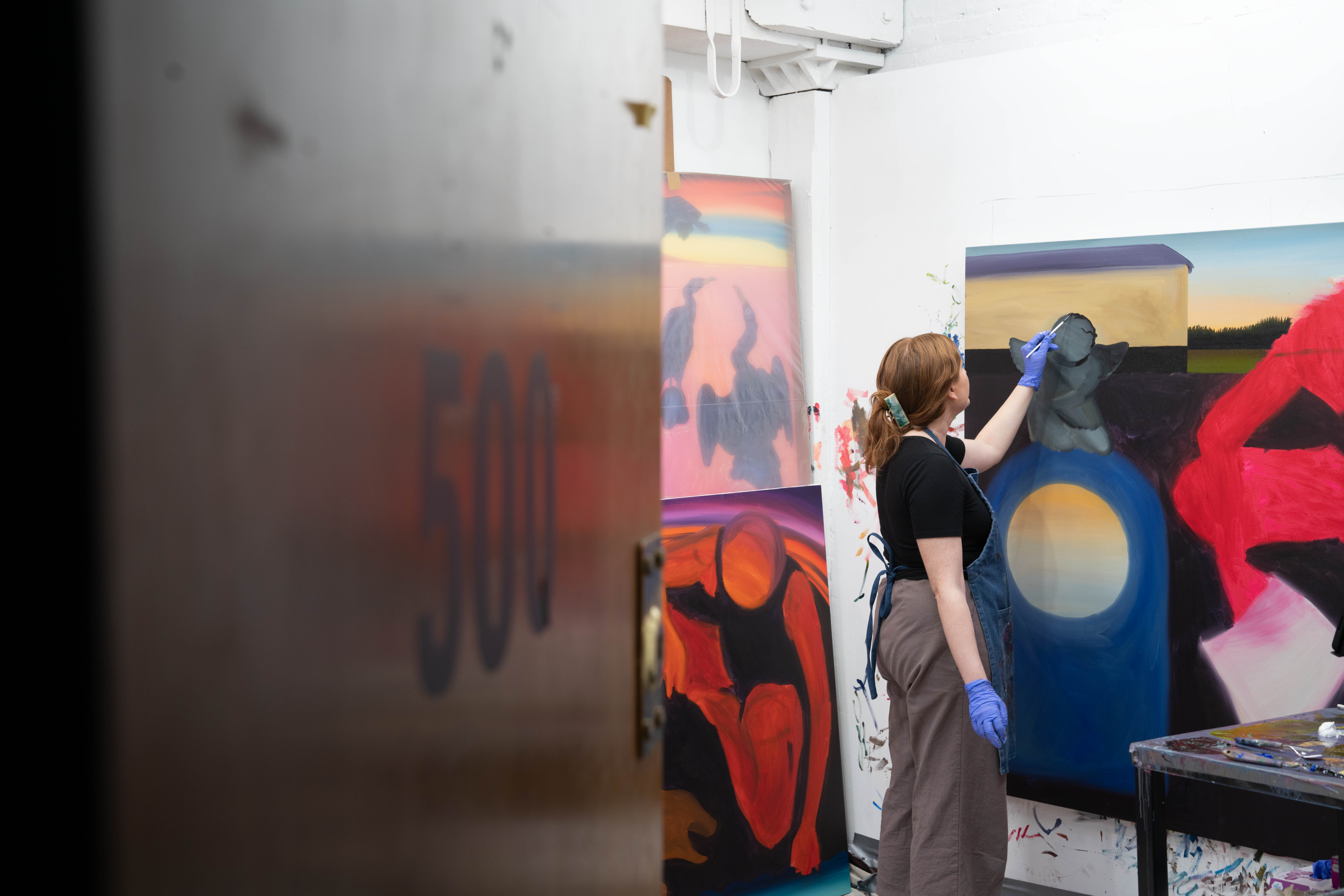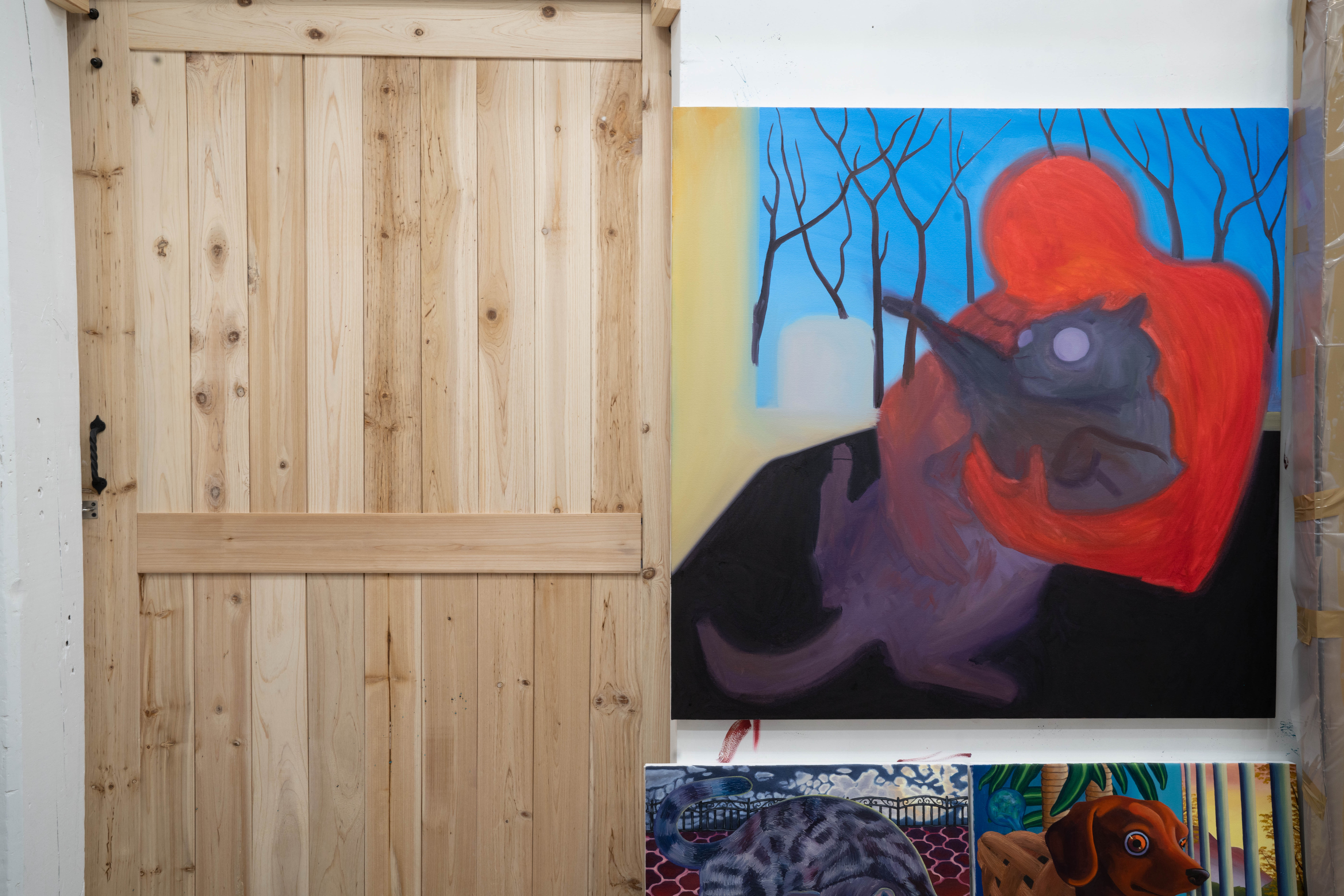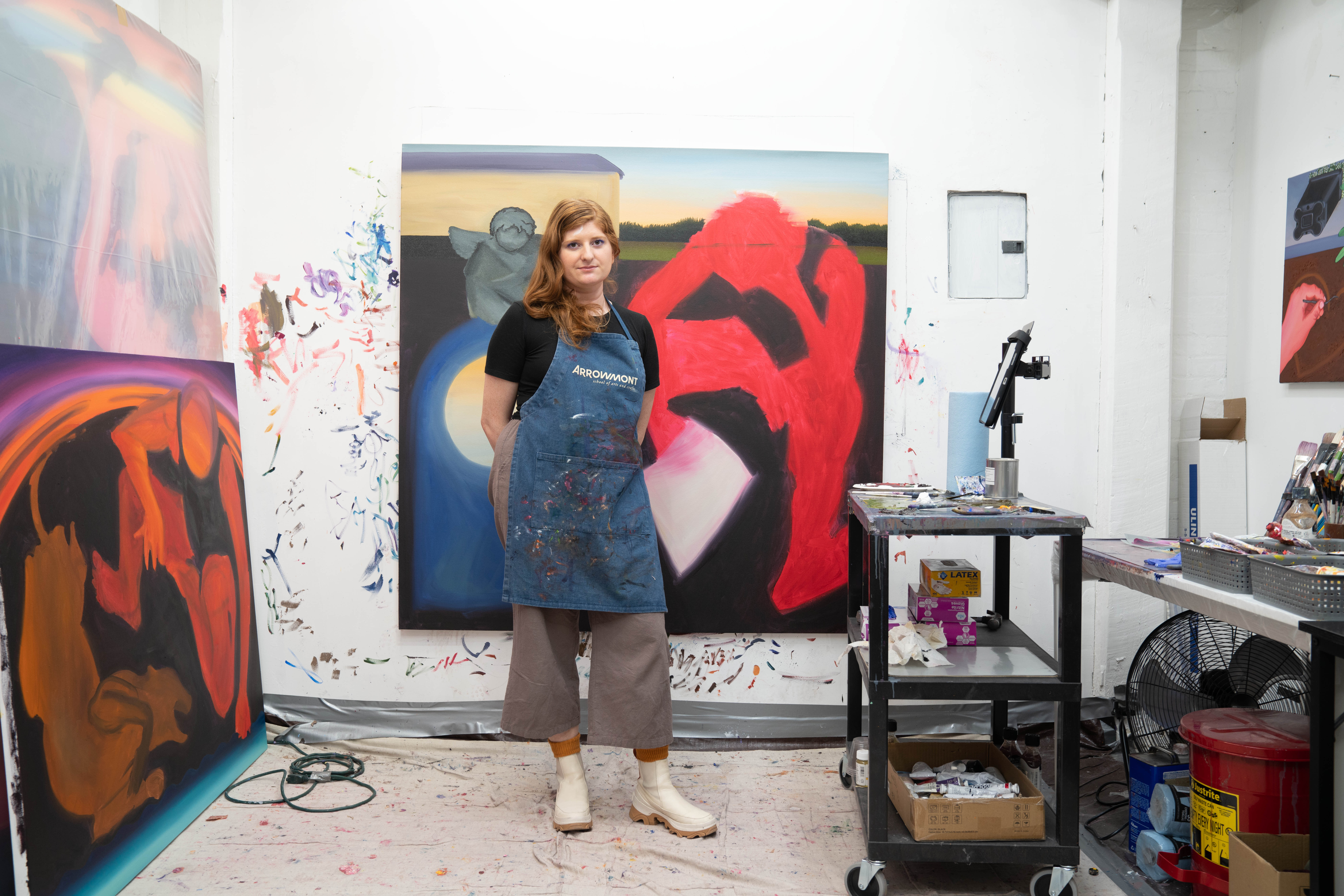Close to The Ground by Natalie Wadlington
FAQ with Natalie Wadlington
Did you spend a lot of time in nature when you were growing up and developing as an artist?
My dad is originally from the Midwest, from South Dakota and he is an avid hiker, backpacker, hunter and fisher. His favourite thing to do is to spend time in nature, so growing up he would always take me and my sister on adventures with him. Some of my most potent memories as a child are in nature, specifically in the Sierra Navada mountain range in California. Backpacking, camping and just having a lot of alone time in nature was very fruitful for me, especially because I was a very intense and empathetic kid. I loved to spend time alone, getting up close to a small bug or flower or leaf… I think these sentiments and moments are explored a lot in the work, with these figures being close to the ground and having close encounters with them. To this day, my experiences with nature orient themselves towards that. When I go hiking, I’m less likely to take in a large scenic view and instead, often find myself looking at the ground, noticing mushrooms, leaves, insects, small flowers blooming out from the ground. I find that when I’m in nature, my eyes are turned downwards to the ground.
What made you start paying the subject matter that you do today?
I was in grad school and was very interested in these scenes that depicted a narrative of tension, where subjects and environments seemed to have a type of conflict or perhaps misunderstanding. I realised this very potent or ripe dynamic is available for us to explore the tension that is in our relationships with animals and nature. There are ways in which we can resonate deeply with them but there’s always a gap when it comes to understanding them on a deeper level. Perhaps from the lack of communication or people’s tendencies to put language onto animals and nature, trying to ‘make sense’ of what they think regardless of their true intentions and thoughts. It’s the engagement with an animal, especially with your domesticated pets, where there’s a deep understanding and also a complete lack of understanding. That tension is always in everything in life, such as the gap between yourself and the things outside your life. For me, that gap in understanding is a source of anxiety but also wonderment. That’s a feeling you tap into a lot as a child, where everything is new and wondrous, but also slightly scary. That sentiment is what I bring to all of the work I do, so no matter what the scene or the story in the painting is, what is interesting to me is that it has this sense of pensive wonderment.
How has your past pet-owning experience influenced your work?
Growing up, I always had pets; dogs and cats. I was a very empathetic kid and felt very deeply for them and all animals. I had a real yearning to understand and relate to them. As an adult, I don’t have any pets mainly because I move around a lot and don’t feel like I would be a responsible caretaker at this time. I think that you have a great responsibility to the animals you bring into your life. It’s interesting as well as I mentioned my dad is a hunter and fisher. I grew up in an agricultural area that has a lot of cattle. My family has a history with dairy cows, so growing up, the understanding of animals was that they were useful, even practical. They benefited people and unlearning that way of thinking has been a journey for me. I think that’s also a type of tension that’s in the work. Grappling and engaging with different types of ways that we think about animals.
Your paintings embody a cubist sensibility, yet the animals within are more fluid and animated in comparison to the other subjects. Could you speak more on this?
For me, it’s important that the subjects and images in the painting are roughly life-sized. That’s informed by my relationship to the surface of the canvas. I think of the act of painting as creating something two-dimensional on a flat surface. So the building up of paint is a bit like building something into form. When I’m creating something on the surface of a painting, I’m imagining placing it on the surface. Materially, it makes sense for me to feel like there’s a one-to one scale going on there.
It’s also important that I include the entire image in the painting. That is why figures, as well as the animals and the scene in general, will curl and contort themselves to fit within the frame of the canvas. For my larger works, I sometimes think of them as actual plots of land. Like I’m placing a garden scene into them or some other kind of backyard scene. So I think of it as kind of laying out subjects on top of a surface. That framework of thinking does come from a type of Cubist tradition, also like a symbolist tradition. It’s a way of thinking of the surface of the canvas. For me, it’s almost hieroglyphic, something that informs the construction of stories and also the way I apply it to paintings.
Did the pandemic change your relationship to nature and do you find yourself challenging a sense of post-pandemic hope or despair in your recent work?
When the pandemic hit, I moved from Detroit down to Texas where my husband was doing graduate work. I spent two years of the pandemic in Texas and we had an apartment with my studio set up there. So for those two years, I was in that building all the time painting. My life was comparably much slower than it had been in grad school and my life before the pandemic. My days consisted of painting and spending time alone or with my partner. We would go on these daily walks and where we were in Texas, it was very humid and lush. There was a lot of greenery, wildlife, and insects. My walks around the neighbourhood were always kind of fruitful because every time I go out, I would see some interesting bird, bug or plant that I have never seen before.
My world was so small and the times that we were living in were so uncertain, I felt myself returning to a state of mind that I hadn’t been in since I was a child. Kind of like you aren't really in control anymore. Before the pandemic, my life was so busy and I felt so in control of what I was doing. When it hit, you had to give up that sense of control, and for me, that put me in a childhood state. During these walks, I was just encountering everything with this kind of wonderment again, this kind of slow, intensive wonderment that informed the energy and attitude that I brought to the work I was making. Since then, I think the work has continued to explore these themes. It’s a wonderful mindset to bring to your everyday life, and I hope that I’ll always be able to keep that sense of wonderment moving forward as life picks back up again. I hope I can still maintain that kind of presence and slowness from my childhood that was regained during the pandemic.
Distinction has been made between wild animals and domesticated animals in your work. Do you see them in a different light?
I don’t necessarily think that there’s any difference between a ‘wild animal’ and a ‘domesticated animal’ that may be your pet. Human reach has been so complete, any kind of sense to anything outside of human expansion is kind of fallacious. However, I want to make sure that I paint from lived experience and I don’t think I’ve ever had that type of close encounter with a wild animal that could inform the kind of paintings that I’m trying to explore and work on. Domesticated animals such as cats and dogs, perhaps even small insects kind of give a closer, deeper and intense kind of experience that I think my work is exploring.
Can you tell us more about the new artworks you’ve created for the exhibition at THE SHOPHOUSE?
I made some smaller paintings to focus on more intimate types of scenes. There are paintings of people crouching on the ground, picking up sticks and leaves. Animals are also close to the ground and that informs what I am interested in generally. Being able to take the opportunity to hone in on that was fruitful for me. I think the themes explored in the show are particularly reflective of these close to the ground type of encounters with mundane wildlife and your small pets.










